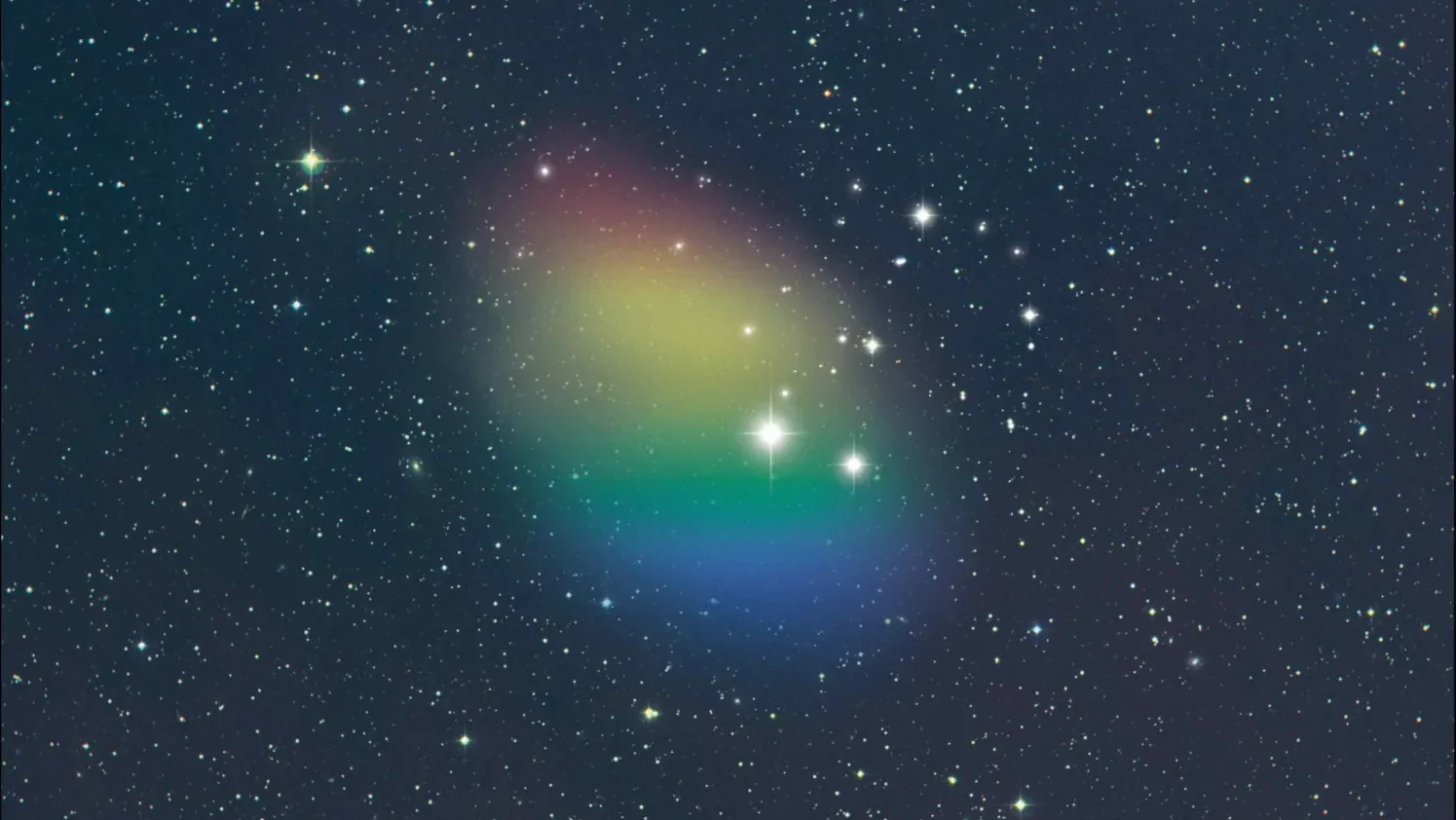The U.S. National Science Foundation National Radio Astronomy Observatory (NSF NRAO), in partnership with several leading Mexican universities and research institutes, has announced a series of landmark agreements and meetings aimed at advancing Mexico’s role in the Next Generation Very Large Array (ngVLA) project.
Recent News
Astronomers Discover a Superheated Star Factory in the Early Universe
Astronomers have uncovered a previously unknown, extreme kind of star factory by taking the temperature of a distant galaxy using the ALMA telescope. The galaxy is glowing intensely in superheated cosmic dust while forming stars 180 times faster than our own Milky Way.
Astronomers Share Largest Molecular Survey To-date: GOTHAM Legacy Data Goes Public
Astronomers in the “GBT Observations of TMC-1: Hunting Aromatic Molecules” research survey, known as GOTHAM, have released a spectral line survey with largest amount of telescope time ever conducted, charting more than 100 molecular species only found in deep space.
Astronomers Accidentally Discover Dark Primordial Galaxy

Artist depiction of hydrogen gas observed in galaxy J0613+52. The colors indicate the likely rotation of the gas relative to the observer (red=away, blue=toward). This image was made using a starfield from STScI POSS-II with additional illustration by NSF/GBO/P.Vosteen.
Could Be the Faintest Galaxy Found to Date
While surveying hydrogen (HI) gas in Low Surface Brightness (LSB) galaxies an astronomer made an unusual discovery, presented today in a press conference at the American Astronomy Society’s annual meeting.
350 unique galaxies were studied for this survey, and astronomers used several major radio telescopes around the world, including the National Science Foundation’s Green Bank Telescope, the Arecibo Telescope, and the Nançay Radio Telescope. “The goal was to determine the gas and dynamic masses of these ultra-diffuse galaxies. To do this, we observed them from several instruments, and many of them more than once,” shares Karen O’Neil, senior scientist of the Green Bank Observatory.
The diffuse nature of LSB galaxies often challenges existing theories of star and galaxy formation. Learning more about their properties sheds light on the formation and evolution of all stars and galaxies, including our own Milky Way.
While examining a discrepancy between data from the Nançay Radio Telescope and the Green Bank Telescope (GBT), O’Neil discovered an error, “The GBT was accidentally pointed to the wrong coordinates and found this object. It’s a galaxy made only out of gas—it has no visible stars. Stars could be there, we just can’t see them.”
Known as J0613+52, this LSB is unlike others that have been observed before. “What we do know is that it’s an incredibly gas rich galaxy. It’s not demonstrating star formation like we’d expect, probably because its gas is too diffuse. At the same time, it’s too far from other galaxies for them to help trigger star formation through any encounters. J0613+52 appears to be both undisturbed and underdeveloped. This could be our first discovery of a nearby galaxy made up of primordial gas,” adds O’Neil.
When it comes to J0613+52, there are many more questions than answers. A deep optical image in multiple bands could reveal more, and push the limits on observable stellar light. The galaxy’s low surface density of gas makes it very difficult, or even impossible, to observe at other wavelengths. Adds O’Neil, “A full sky survey by an extremely sensitive instrument like the Green Bank Telescope could uncover more of these objects.”
About Green Bank Observatory
The Green Bank Observatory is a major facility of the National Science Foundation and is operated by Associated Universities, Inc. The first national radio astronomy observatory in the US, it’s home to the 100-meter Green Bank Telescope, the largest fully-steerable radio telescope in the world.
This news article was originally published on the GBO website on January 8, 2024.
Recent News
NSF National Radio Astronomy Observatory and Mexican Institutions Sign Historic Agreements to Advance ngVLA Collaboration
The U.S. National Science Foundation National Radio Astronomy Observatory (NSF NRAO), in partnership with several leading Mexican universities and research institutes, has announced a series of landmark agreements and meetings aimed at advancing Mexico’s role in the Next Generation Very Large Array (ngVLA) project.
Astronomers Discover a Superheated Star Factory in the Early Universe
Astronomers have uncovered a previously unknown, extreme kind of star factory by taking the temperature of a distant galaxy using the ALMA telescope. The galaxy is glowing intensely in superheated cosmic dust while forming stars 180 times faster than our own Milky Way.
Astronomers Share Largest Molecular Survey To-date: GOTHAM Legacy Data Goes Public
Astronomers in the “GBT Observations of TMC-1: Hunting Aromatic Molecules” research survey, known as GOTHAM, have released a spectral line survey with largest amount of telescope time ever conducted, charting more than 100 molecular species only found in deep space.
